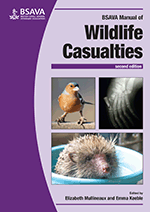
Full text loading...

When an injured or orphaned wild animal is presented to a veterinary surgeon, rapid and important assessments and decisions have to be made, primarily to prevent suffering, but also in relation to staff health and safety and legislative requirements. This chapter discusses triage, which entails examination and assessment for successful rehabilitation. Reasons and methods for humane euthanasia of wild animals are also detailed.
Wildlife triage and decision-making, Page 1 of 1
< Previous page | Next page > /docserver/preview/fulltext/10.22233/9781910443316/9781910443316.4-1.gif

Full text loading...



